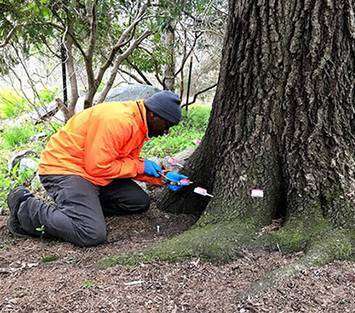Frequently Asked Questions
Tree healthcare services include inspections, disease diagnosis, pest control, pruning, fertilization, and soil management to ensure healthy growth and long-term tree vitality.
Regular tree healthcare prevents diseases, strengthens roots, and enhances your property’s beauty and safety. It also protects your landscape investment and ensures sustainable tree growth.
If your tree shows signs like yellowing leaves, slow growth, pest infestations, or dead branches, it’s time to call a certified arborist for a detailed tree health evaluation and treatment plan.
Most trees benefit from annual checkups, though high-risk or mature trees may need seasonal inspections. Regular maintenance ensures early detection of diseases and keeps your landscape healthy year-round.
Tree trimming focuses on shaping and appearance, while tree healthcare addresses root strength, disease prevention, and soil nutrition to promote long-term health and resilience of your trees.
Results vary depending on the issue. Most trees show visible improvement in 2–4 weeks after treatment, while complete recovery from disease or pest infestations may take one full growing season.
In many cases, yes. Certified arborists can diagnose the cause—such as root rot or pest infestation—and apply treatments that revive weakened trees and prevent further decline when caught early.
Professional consultation provides expert guidance on disease management, proper pruning techniques, and long-term preservation strategies. Certified arborists offer science-based recommendations that improve tree longevity, enhance property value, and reduce risks associated with declining or hazardous specimens.
Certified arborists have specialized training to diagnose, treat, and maintain trees safely and effectively. Their expertise ensures accurate solutions that protect your trees and your property investment.
Early spring and fall are optimal for most treatments, as trees actively absorb nutrients and respond better to interventions. However, pest management and disease control may require specific timing, making professional assessment crucial for determining the most effective treatment schedule.



